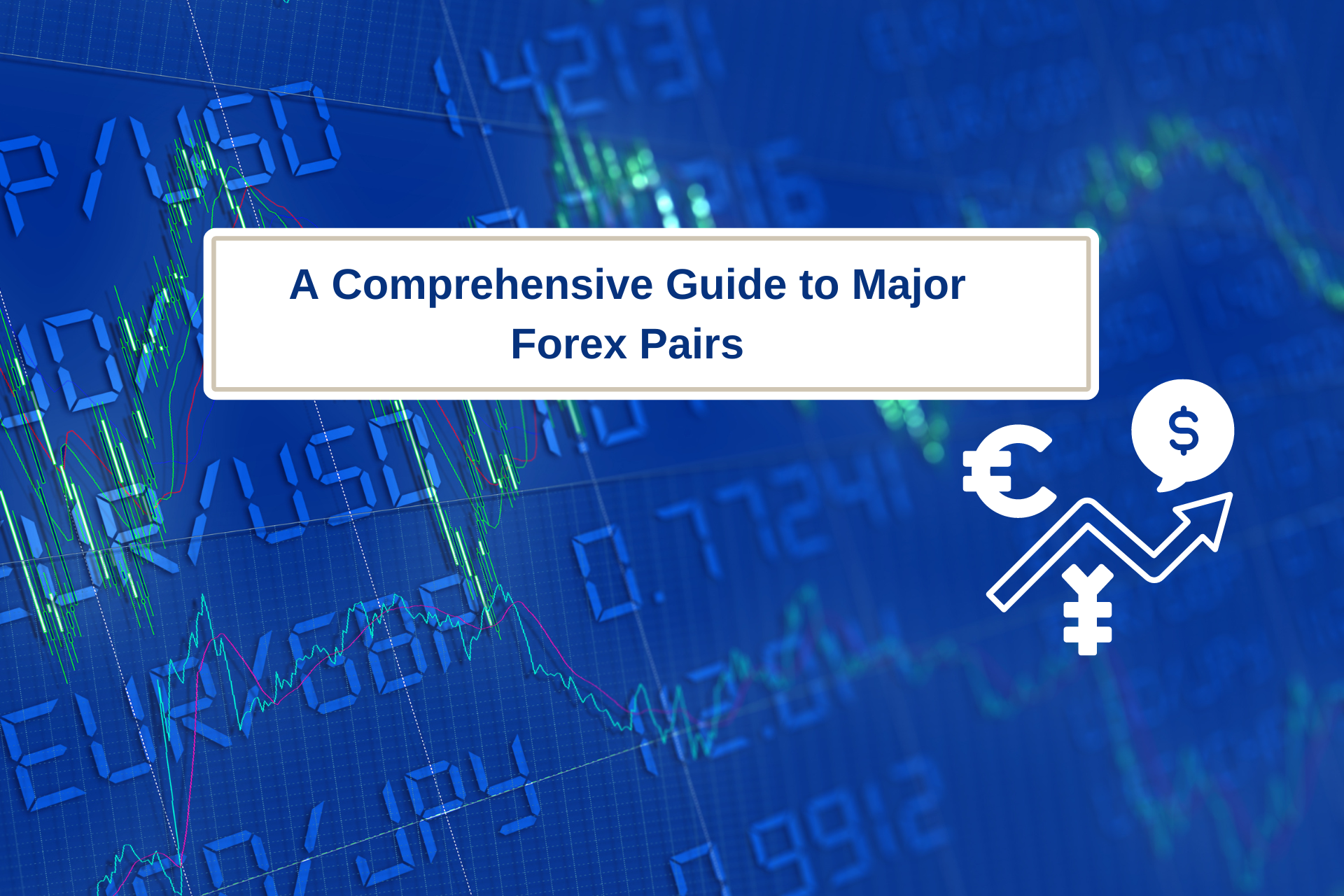- ForexHero.Ai
- Analysis
A Comprehensive Guide to Major Forex Pairs: Insights, Tips, and Trends
The world of forex trading is vast and complex, but understanding major currency pairs is fundamental for anyone looking to succeed in this dynamic market. In this guide, we’ll dive deep into major forex pairs, exploring their characteristics, importance, and how they are traded. Whether you’re a novice trader or an experienced professional, this article will provide valuable insights, practical tips, and relevant examples to enhance your trading strategies.
What Are the Major Forex Pairs?
Major forex pairs are the most frequently traded currency pairs in the forex market. These pairs always include the US dollar (USD) on one side and are known for their high liquidity and stability. They are the backbone of the forex market and are crucial for traders due to their tight spreads and significant trading volumes.
Understanding the Major Currency Pairs:
The major currency pairs are:
- EUR/USD (Euro/US Dollar)
- USD/JPY (US Dollar/Japanese Yen)
- GBP/USD (British Pound/US Dollar)
- USD/CHF (US Dollar/Swiss Franc)
These pairs are called “majors” because they involve the currencies of the largest and most economically powerful nations. Understanding the economic and political factors affecting these countries can help predict price movements and make informed trading decisions.
Why Traders Trade the Major Currency Pairs
1. High Liquidity: Major currency pairs have the highest liquidity in the forex market. High liquidity means that large trades can be executed without causing significant price changes, allowing traders to enter and exit positions easily.
2. Tight Spreads: Due to their high trading volumes, major pairs typically have lower spreads compared to other currency pairs. Tight spreads reduce trading costs, making it more economical to trade these pairs.
3. Stability and Predictability: The economies behind the major currencies are relatively stable, which contributes to the predictability of their price movements. This stability attracts traders looking for more consistent returns.
The Four Traditional Major Pairs
1. EUR/USD: Known as the “Eurodollar,” this pair represents the two largest economies in the world. It is highly influenced by economic reports and political events in the Eurozone and the US.
2. USD/JPY: This pair is popular among traders due to Japan’s significant role in global trade and finance. The Bank of Japan’s monetary policies often impact its movements.
3. GBP/USD: Also called “Cable,” this pair is known for its volatility and is influenced by economic data from the UK and US.
4. USD/CHF: The “Swissie” is often considered a safe currency, with the Swiss Franc being stable and less prone to inflation.
Commodity Currencies
Commodity currencies are those from countries whose economies are heavily dependent on the export of certain raw materials. Examples include:
1. AUD/USD (Australian Dollar/US Dollar): Australia’s economy is closely tied to commodities like gold and iron ore.
2. USD/CAD (US Dollar/Canadian Dollar): Canada is a major exporter of oil, and its currency often fluctuates with oil prices.
3. NZD/USD (New Zealand Dollar/US Dollar): New Zealand’s economy is linked to agricultural exports, particularly dairy.
Cross Currencies
Cross currency pairs do not include the US dollar. Examples of cross pairs involving major currencies are:
1. EUR/GBP (Euro/British Pound)
2. EUR/JPY (Euro/Japanese Yen)
3. GBP/JPY (British Pound/Japanese Yen)
These pairs allow traders to diversify their portfolios and take advantage of opportunities in different markets.
How Are the Prices of Major Pairs Determined?
The prices of major currency pairs are determined by various factors, including:
1. Economic Indicators: Reports on GDP, employment, inflation, and interest rates can significantly impact currency values.
2. Political Stability: Political events, such as elections or policy changes, can cause volatility in currency prices.
3. Market Sentiment: Trader perceptions and reactions to news and events play a crucial role in price movements.
4. Supply and Demand: The balance between buyers and sellers in the forex market determines the price of a currency pair.
How Is a Currency Pair Calculated?
A currency pair is quoted in terms of two currencies: the base currency and the quote currency. The base currency is the first currency listed in the pair, and the quote currency is the second. The quote shows how much of the quote currency is needed to purchase one unit of the base currency.
For example, in the EUR/USD pair:
- EUR (Euro) is the base currency.
- USD (US Dollar) is the quote currency.
If the EUR/USD pair is quoted at 1.2000, it means that 1 Euro is equivalent to 1.2000 US Dollars. In other words, you need 1.2000 US Dollars to buy 1 Euro.
Example:
To illustrate how a currency pair is calculated, let’s consider a practical example involving the EUR/USD pair.
Initial Purchase:
- Currency Pair Quote: EUR/USD = 1.2000
- Transaction: You decide to buy 10,000 units of EUR/USD at the quoted rate of 1.2000.
This means you are purchasing 10,000 Euros and selling the equivalent amount in US Dollars. The amount of US Dollars required is calculated as follows:
USD required=Units of EUR×Quote\text{USD required} = \text{Units of EUR} \times \text{Quote}USD required=Units of EUR×Quote
USD required=10,000×1.2000=12,000 USD\text{USD required} = 10,000 \times 1.2000 = 12,000 \text{ USD}USD required=10,000×1.2000=12,000 USD
So, you need 12,000 US Dollars to buy 10,000 Euros at the rate of 1.2000.
Price Movement and Selling
Now, let’s assume the price of EUR/USD moves to 1.2500. This means that the Euro has strengthened against the US Dollar.
- New Currency Pair Quote: EUR/USD = 1.2500
- Transaction: You decide to sell your 10,000 Euros at the new quoted rate of 1.2500.
The amount of US Dollars you will receive is calculated as follows:
USD received=Units of EUR×New Quote\text{USD received} = \text{Units of EUR} \times \text{New Quote}USD received=Units of EUR×New Quote
USD received=10,000×1.2500=12,500 USD\text{USD received} = 10,000 \times 1.2500 = 12,500 \text{ USD}USD received=10,000×1.2500=12,500 USD
Calculating Profit
To determine your profit from this trade, you subtract the initial amount of US Dollars spent from the amount received after the price movement:
Profit=USD received−USD spent\text{Profit} = \text{USD received} – \text{USD spent}Profit=USD received−USD spent
Profit=12,500−12,000=500 USD\text{Profit} = 12,500 – 12,000 = 500 \text{ USD}Profit=12,500−12,000=500 USD
Therefore, by buying 10,000 Euros at 1.2000 and selling them at 1.2500, you make a profit of 500 US Dollars.
Example with Recent Data
Let’s apply this with recent data:
- Initial Purchase: On July 2, 2024, the EUR/USD is quoted at 1.0950.
- Transaction: You buy 10,000 units of EUR/USD at 1.0950.
USD required=10,000×1.0950=10,950 USD\text{USD required} = 10,000 \times 1.0950 = 10,950 \text{ USD}USD required=10,000×1.0950=10,950 USD
- Price Movement: On July 26, 2024, the EUR/USD moves to 1.1150.
- Selling: You sell your 10,000 Euros at 1.1150.
USD received=10,000×1.1150=11,150 USD\text{USD received} = 10,000 \times 1.1150 = 11,150 \text{ USD}USD received=10,000×1.1150=11,150 USD
- Calculating Profit:
Profit=11,150−10,950=200 USD\text{Profit} = 11,150 – 10,950 = 200 \text{ USD}Profit=11,150−10,950=200 USD
By buying at 1.0950 and selling at 1.1150, you make a profit of 200 US Dollars.
Forex Market Trends and Trending Currency Pairs
Understanding Forex Market Trends
Market trends in forex trading refer to the general direction in which a currency pair is moving over a specific period. Trends can be classified into three primary categories:
1. Uptrend (Bullish Market): This occurs when the price of a currency pair is consistently rising. In an uptrend, higher highs and higher lows are formed, indicating increasing demand and investor confidence in the currency.
2. Downtrend (Bearish Market): This happens when the price of a currency pair is consistently falling. A downtrend is characterized by lower highs and lower lows, suggesting decreasing demand and investor pessimism about the currency.
3. Sideways Trend (Range-Bound Market): In a sideways trend, the price of a currency pair moves within a horizontal range, neither consistently rising nor falling. This indicates a period of consolidation where supply and demand are relatively balanced.
Trending Currency Pairs
Trending currency pairs are those that exhibit strong directional movements, either upwards or downwards. Identifying these pairs can provide profitable trading opportunities. Here are some examples of trending currency pairs:
- EUR/USD: The Euro/US Dollar pair is one of the most traded pairs in the forex market. Its trend can be influenced by economic data from the Eurozone and the US, as well as interest rate differentials between the European Central Bank (ECB) and the Federal Reserve (Fed).
- USD/JPY: The US Dollar/Japanese Yen pair often trends based on the economic performance and monetary policies of the US and Japan. Safe-haven demand for the Yen during times of global uncertainty can also impact its trend.
- GBP/USD: The British Pound/US Dollar pair, also known as “Cable,” can be highly volatile and influenced by economic data and political events in the UK and US. Brexit developments, for instance, have caused significant trends in this pair.
- AUD/USD: The Australian Dollar/US Dollar pair, known as a commodity currency pair, is influenced by commodity prices, particularly gold and iron ore. Economic data from Australia and China, a major trading partner, also impact its trend.
Real-World Example
On July 2, 2024, the EUR/USD was trading at 1.0950. By July 26, 2024, it had risen to 1.1150, influenced by positive economic data from the Eurozone and dovish statements from the Federal Reserve. Traders who anticipated this move could have profited from the 200-pip increase. This example illustrates how keeping abreast of economic indicators and central bank policies can lead to profitable trading opportunities in trending currency pairs.
READ MORE:
The Top 7 Currencies in the Forex Market
Forex Currency Pairs: A Comprehensive Guide to Understanding and Trading
Mastering Forex Leverage: A Comprehensive Guide
Conclusion
Understanding major currency pairs is essential for successful forex trading. By analyzing their characteristics, market trends, and economic influences, traders can make informed decisions and develop effective strategies. Whether you’re trading EUR/USD or exploring cross currencies like EUR/GBP, having a comprehensive knowledge of major forex pairs will enhance your trading experience and potential for profitability.
Optimizing your trading approach with fundamental and technical analysis, staying informed on global events, and managing risks effectively, are crucial steps for navigating the forex market confidently and achieving your trading goals. For traders looking to enhance their strategies, tools like ForexHero offer comprehensive resources and automated solutions to help you stay ahead in the dynamic world of forex trading. By leveraging such platforms, you can gain valuable insights and make well-informed trading decisions, ultimately improving your trading performance.

